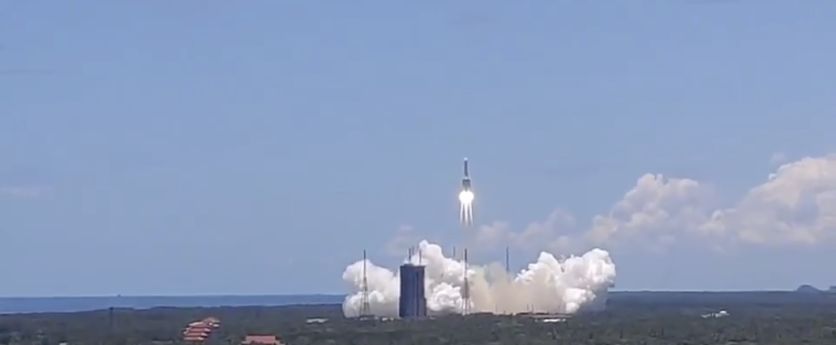China embarked on the first rover flight to Mars. The six-wheeled robot, encapsulated in a protective tube, was launched off Earth at 12:40 local time (04:40 GMT) by a Long March 5 rocket from Wenchang spaceport Hainan Island.
In February 2021, the robot may "successfuly" arrive in orbit around the Red Planet.

Called Tianwen-1, or "Questions to Heaven," the rover does not actively attempt to land for a further two to three months on the Earth.
The American Viking landers used the wait-and-see technique effectively in the 1970s. This will allow engineers to determine Mars' atmospheric conditions before attempting what will become a dangerous descent.
ALSO READ : [VIDEO] SpaceX's South Korea Satellite Launch Successful Despite 30-Minute Delay Prior to Blast Off
A little different launch
China National Space Administration (CNSA) has yet to announce that it has entered its expected orbit and is on its way to the red planet.
It was a little different from the live launch day reporting that we had come to expect from NASA and SpaceX likes. CNSA offered no official live streams, and there were no official countdowns. Alternatively, several ardent rocket-watchers followed private videos uploaded to Chinese Weibo and Douyu social media sites.
Here's a video of the launch of Tianwen-1 atop the Long March 5 Y4. Source: https://t.co/a5vbXcTijb pic.twitter.com/7oRLNegDNK — Andrew Jones (@AJ_FI) July 23, 2020
One out of three missions
Tianwen-1 is one of three 11-day missions setting off to Mars. The United Arab Emirates launched its satellite Hope toward the Red Planet on Monday. NASA also plans to deploy the next-generation rover, Perseverance, about a week from now.
The Chinese mission's planned touchdown site would be a flat plain within the Utopia impact basin just north of the Mars equator. The rover must study the geology of the field-the surface above, and just below.
Tianwen-1 looks much like the Spirit of Nasa and the Opportunity rovers of the 2000s. It weighs around 240 kg and is powered by solar panels that fold out.
A tall mast holds cameras for taking pictures and helping navigation. It also has five additional instruments that will help test local rock mineralogy and search for any water-ice.
However, this surface exploration is just half the mission. The cruise ship that shepherds the rover to Mars must also research the planet from orbit using seven remote sensing instruments.
Won't it crash?
The historical figures for Red Planet exploration are well known: nearly half of all attempts have crashed. Indeed, China's first attempt to send a Yinghuo-1 satellite to the dusty world stalled in Earth's orbit when its Russian carrier stage hit and dropped into the Pacific Ocean.
But China can rely on the achievements of its two new Yutu lunar rovers, making the first-ever soft landing on the far side of the Moon last year.
The country engineers would claim they are now able to tackle the dreaded "seven minutes of terror." That is when it takes for a spacecraft to make a hazardous journey from the top of the Martian atmosphere to the Moon.
Tianwen-1 will use a combination of a capsule, parachute, and retro-rocket to burn off entrance speed and slow down to a surface-facing stop. If all goes well, a ramp will be deployed by the landing mechanism to allow the rover to start its traverse across the Martian plain.
Chinese scientists want the robot to have at least 90 Martian days of operation. A day on Mars, or Sol, lasts 24 hours, 39 minutes.
ⓒ 2026 TECHTIMES.com All rights reserved. Do not reproduce without permission.




